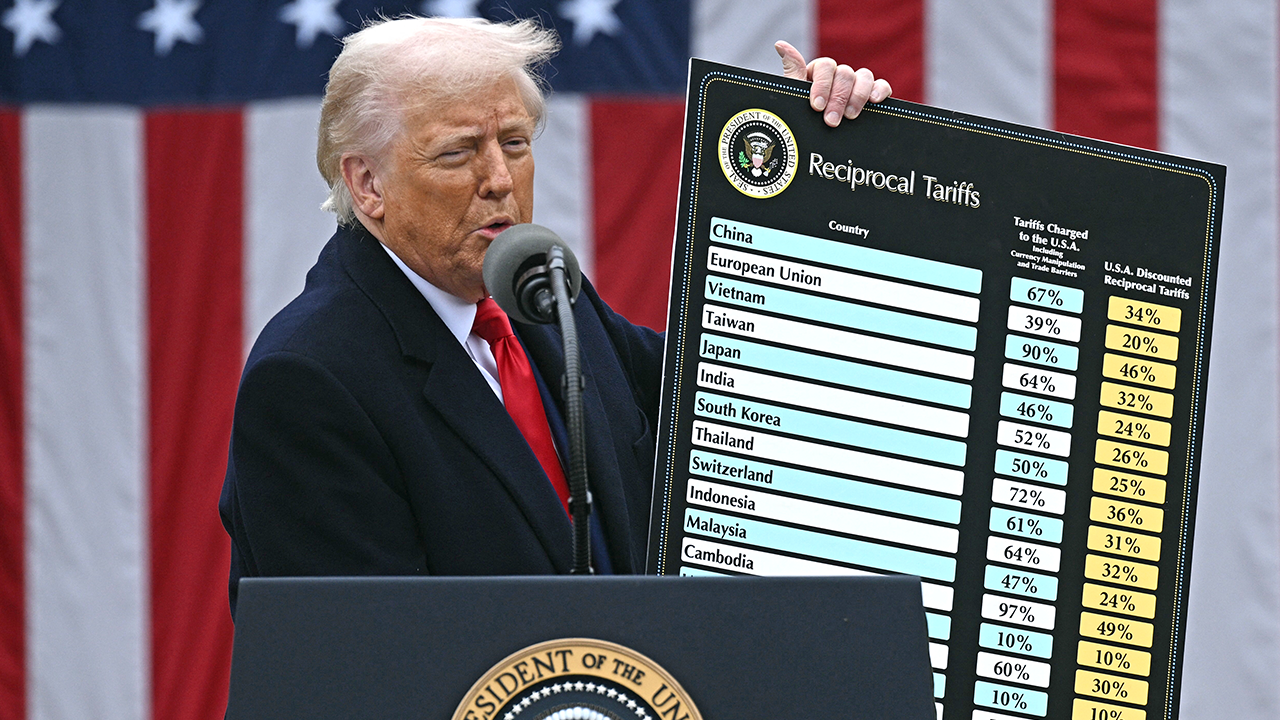Boeing’s F-47 sixth-generation stealth fighter may just be “Increment 1” of the USAF’s Next Generation Air Dominance (NGAD) manned combat jet initiative. This is according to the former Assistant Secretary of the Air Force for Acquisition, Technology & Logistics Andrew Hunter that had a major hand in the program up until the end of the Biden administration.
Alongside the former Secretary of the Air Force, Frank Kendall, Hunter spoke on the latest edition of the Defense & Aerospace Report’s Air Power Podcast. You can also read our previous run-down of the main revelations that came to pass in what was a wide-ranging discussion on the F-47 and the related NGAD initiative, here.
 The then-Secretary of the Air Force Frank Kendall, center, along with Andrew Hunter, center left, the then-Assistant Secretary of the Air Force for Acquisition, Technology & Logistics, meet with Air Marshal Richard Knighton, U.K. Ministry of Defence Deputy Chief of Defence Staff, at RAF Fairford, England, in July 2022. U.S. Air Force photo by Staff Sgt. Eugene Oliver Staff Sgt. Eugene Oliver
The then-Secretary of the Air Force Frank Kendall, center, along with Andrew Hunter, center left, the then-Assistant Secretary of the Air Force for Acquisition, Technology & Logistics, meet with Air Marshal Richard Knighton, U.K. Ministry of Defence Deputy Chief of Defence Staff, at RAF Fairford, England, in July 2022. U.S. Air Force photo by Staff Sgt. Eugene Oliver Staff Sgt. Eugene OliverStressing that the competition for the NGAD manned combat jet, won by Boeing, was “structured in a way to encourage […] creativity,” Hunter remarked that the F-47, now under contract for development, represents “Increment 1,” noting that the program is based around the concept of there being future increments beyond this.
As a result, the competition for the NGAD combat jet wasn’t designed to be “all or nothing,” rather, the winner will likely receive an eventual production contract for “roughly” 100 aircraft, after which “there will be other orders coming down the pike.” In the past, Kendall had repeatedly stated that the crewed component of NGAD will be made up of around 200 aircraft.
Intriguingly, a very similar concept is already taking shape for the Air Force’s CCA program. Anduril and General Atomics are currently developing designs as part of Increment 1, with these now designated as the YFQ-42A and YFQ-44A, respectively. Service officials have said they could ultimately buy between 100 and 150 Increment 1 CCAs, and multiple thousands of drones across all of the program’s eventual increments. Increment II is already on the horizon, for instance.
 A composite rendering of the CCA designs that General Atomics (top) and Anduril (bottom) are currently developing, along with their new formal designations. General Atomics/Anduril/TWZ
A composite rendering of the CCA designs that General Atomics (top) and Anduril (bottom) are currently developing, along with their new formal designations. General Atomics/Anduril/TWZHunter’s words seem to suggest that all might not be lost for Lockheed Martin, which was beaten to the Engineering and Manufacturing Development (EMD) contract by Boeing’s F-47 design.
Perhaps there could even be a way back into the program in a leading position for Northrop Grumman, which announced what it described as a voluntary withdrawal from the NGAD combat jet competition in 2023. On the other hand, Hunter also indicated that Northrop Grumman was in line to be ejected from competition before that point, which might well adversely impact its future prospects here.
Of course, whether either of these companies could take on a central role in the manned NGAD initiative via future increments involving different designs is questionable, with further developments of the F-47 looking to be a more realistic path to achieving the kinds of goals that Hunter refers to. It’s also worth noting that these companies can still become (and likely will, at least to some degree) subcontractors for the prime contractor on the program.
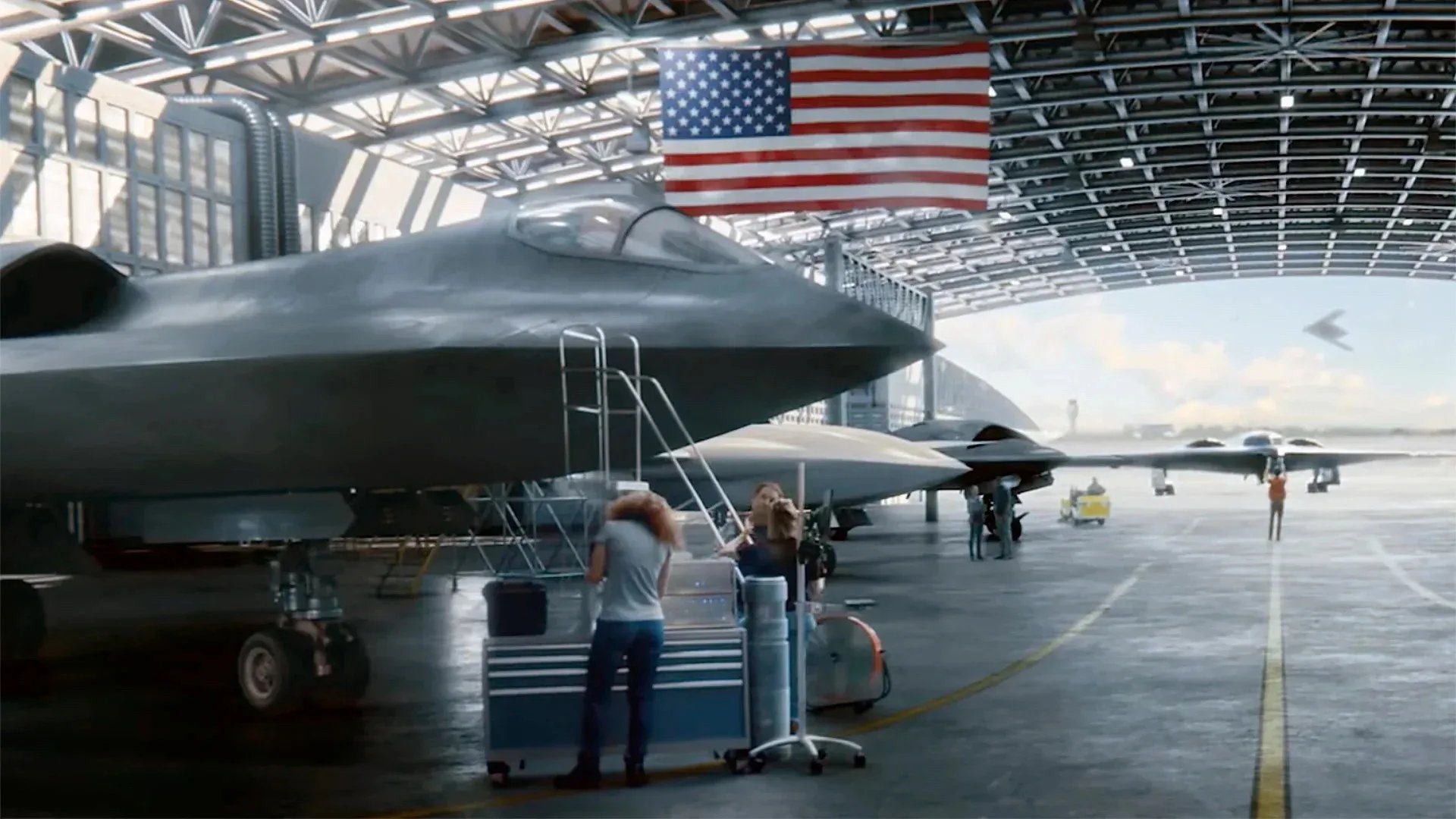 A rendering of a notional NGAD-type combat jet presented in a Northrop Grumman promotional video back in 2021. Northrop Grumman screencap
A rendering of a notional NGAD-type combat jet presented in a Northrop Grumman promotional video back in 2021. Northrop Grumman screencap Clearly, however, Hunter sees different increments as being a part of the program for the NGAD combat jet, although “time will tell how many increments ever get built.”
As for how those future increments may look, Hunter didn’t reveal any more details. Although he noted that “both designs were quite creative,” it seems that Boeing’s design for the F-47 may have been somewhat bolder and more innovative than that from rival Lockheed Martin. Hunter said that, in general, incumbent contractors (in this case, Lockheed Martin, already building the F-35) can often appear more risk-averse than challengers. The “incentives may have been stronger for Boeing. In some ways, they needed to win this one more than Lockheed did,” Hunter added.
Between them, Hunter and Kendall did give a few impressions of what the F-47 will likely consist of, which could help provide an idea of how it might be adapted for further increments in the future.
Overall, it seems the F-47 follows the basic philosophy of the F-22 Raptor stealth fighter. As Kendall explained it, the F-47 will primarily be an “F-22-like long-range air superiority focused aircraft, designed for power projection, and designed to go against the most stressing threats that we have.”
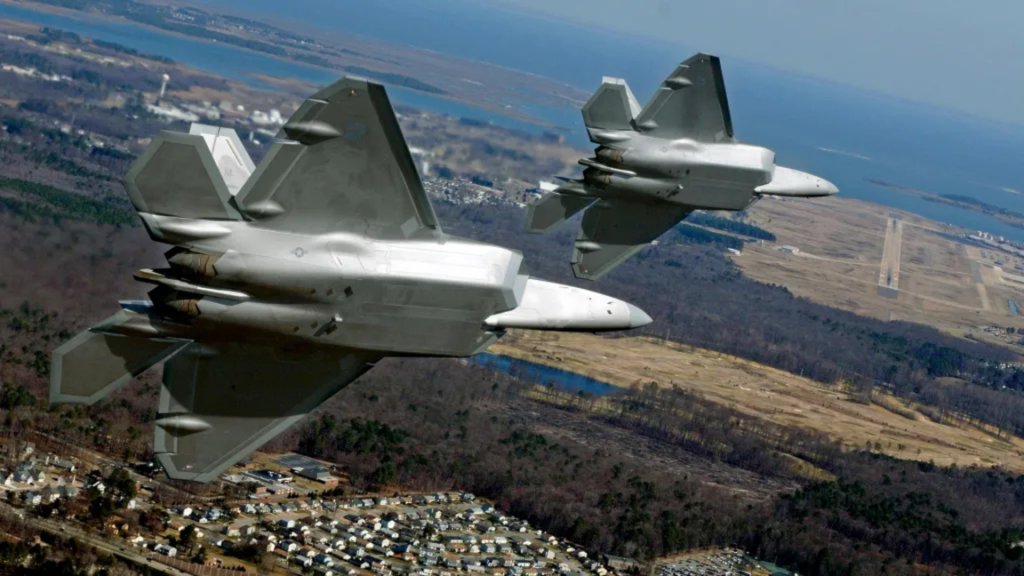 A pair of F-22 Raptor stealth fighters turn on final approach to Langley Air Force Base in Virginia. U.S. Air Force
A pair of F-22 Raptor stealth fighters turn on final approach to Langley Air Force Base in Virginia. U.S. Air Force On top of this, the F-47 will, from the outset, be equipped for the “quarterback role,” in which it will control uncrewed Collaborative Combat Aircraft (CCAs).
Further iterations of the NGAD combat jet could still have these qualities, but they might yet add more.
Alternatively, the future iterations might emerge as less complex, cheaper designs, intended to maximize ‘combat mass,’ rather than offer the very highest level of penetrating air superiority capabilities. The ramifications of a lower-cost NGAD combat jet are something that we explored in depth when this same topic was brought up by Kendall last summer.
Interestingly, this latter option would also seem to chime with the idea of an export-configured F-47, something that President Donald Trump referred to when he announced Boeing’s win.
Trump said that U.S. allies “are calling constantly” with a view to obtaining an export version of the NGAD fighter. He said that the United States would be selling them to “certain allies … perhaps toned-down versions. We’d like to tone them down about 10 percent, which probably makes sense, because someday, maybe they’re not our allies, right?”
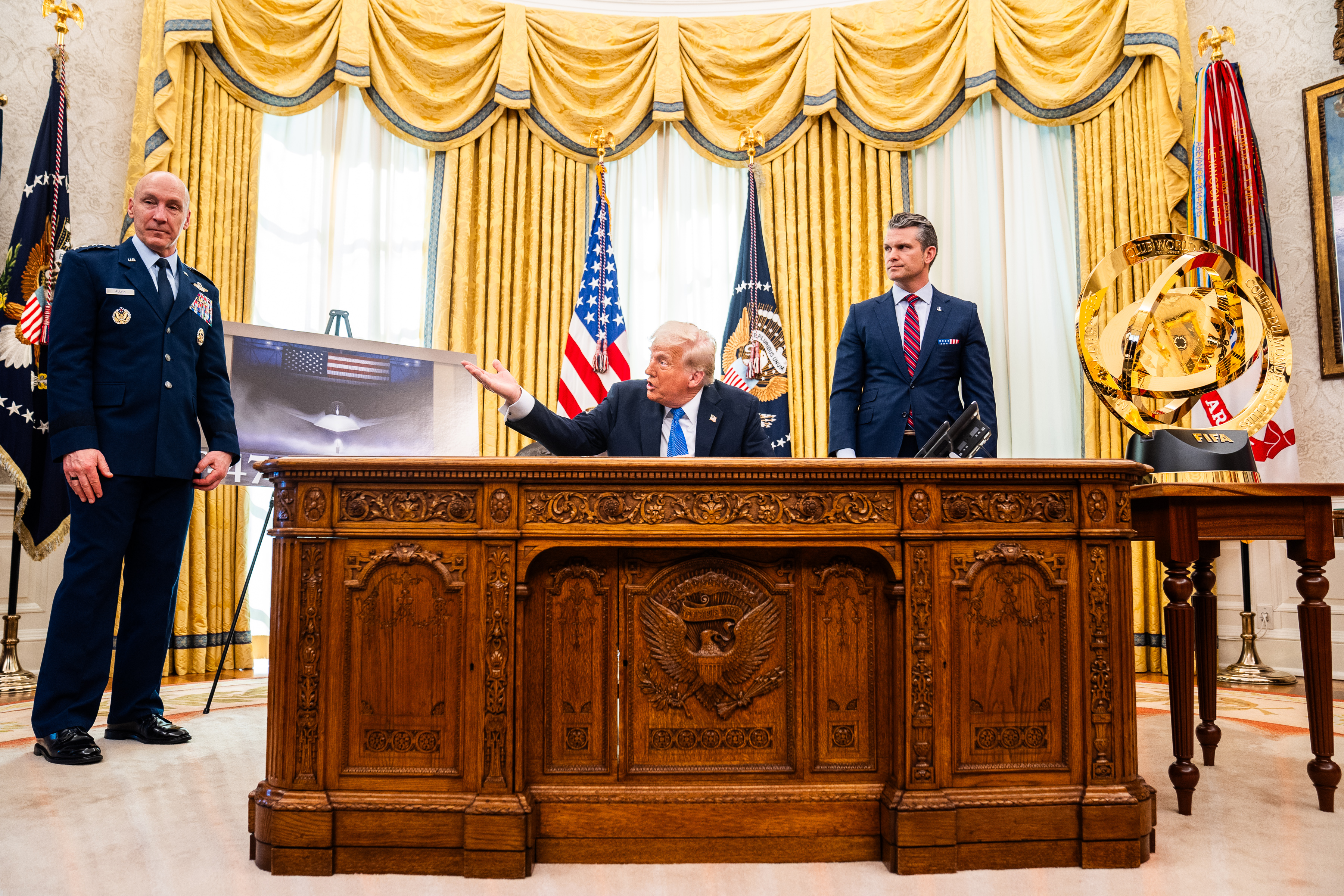 U.S. President Donald Trump speaks during a meeting to announce the F-47 sixth-generation fighter jet in the Oval Office of the White House on March 21, 2025. U.S. Secretary of Defense Pete Hegseth and General David Allvin also attended the meeting. Photo by Demetrius Freeman/The Washington Post via Getty Images The Washington Post
U.S. President Donald Trump speaks during a meeting to announce the F-47 sixth-generation fighter jet in the Oval Office of the White House on March 21, 2025. U.S. Secretary of Defense Pete Hegseth and General David Allvin also attended the meeting. Photo by Demetrius Freeman/The Washington Post via Getty Images The Washington PostAs we pointed out at the time, getting the F-47 cleared for export, even in a downgraded version, could be a challenge, even more so than it was for the F-22. Kendall was generally circumspect about the chances of an F-47 export version.
“I would be very surprised if any of our partners were prepared to pay that unit cost for a new aircraft,” he said, in reference to the price tag of the basic F-47. Kendall says the F-47’s unit cost is expected to be at least twice that of an F-35, or in the $160 million to $180 million range, based on publicly available information. In the past he has mentioned this new aircraft costing up to around three times that of existing designs, or upwards of $300 million. It’s not clear what changed that would result in lowering his original estimate.
“Another factor right now, of course, is that the attitude we’ve taken towards our allies is driving a lot of them to rethink their degree of cooperation and commitment and reliance on us sources for equipment,” Kendall added. He was referring to the growing schisms between the United States and certain NATO allies, increasingly worried about Washington’s commitment to mutual defense and its overall reliability as a strategic partner.
Kendall also raised a question about the viability of a “toned-down version” of the F-47, based on the requirements of prospective customers:
“I think, going forward, there are a number of things that will make it problematic for international sales of the F-47. One of them is going to be the statement that was made about lowering capability. You know, we basically have very close allies traditionally, and we share some of the best of our capabilities with them, because we have a lot of trust in them. This administration doesn’t seem to be taking that point of view.”
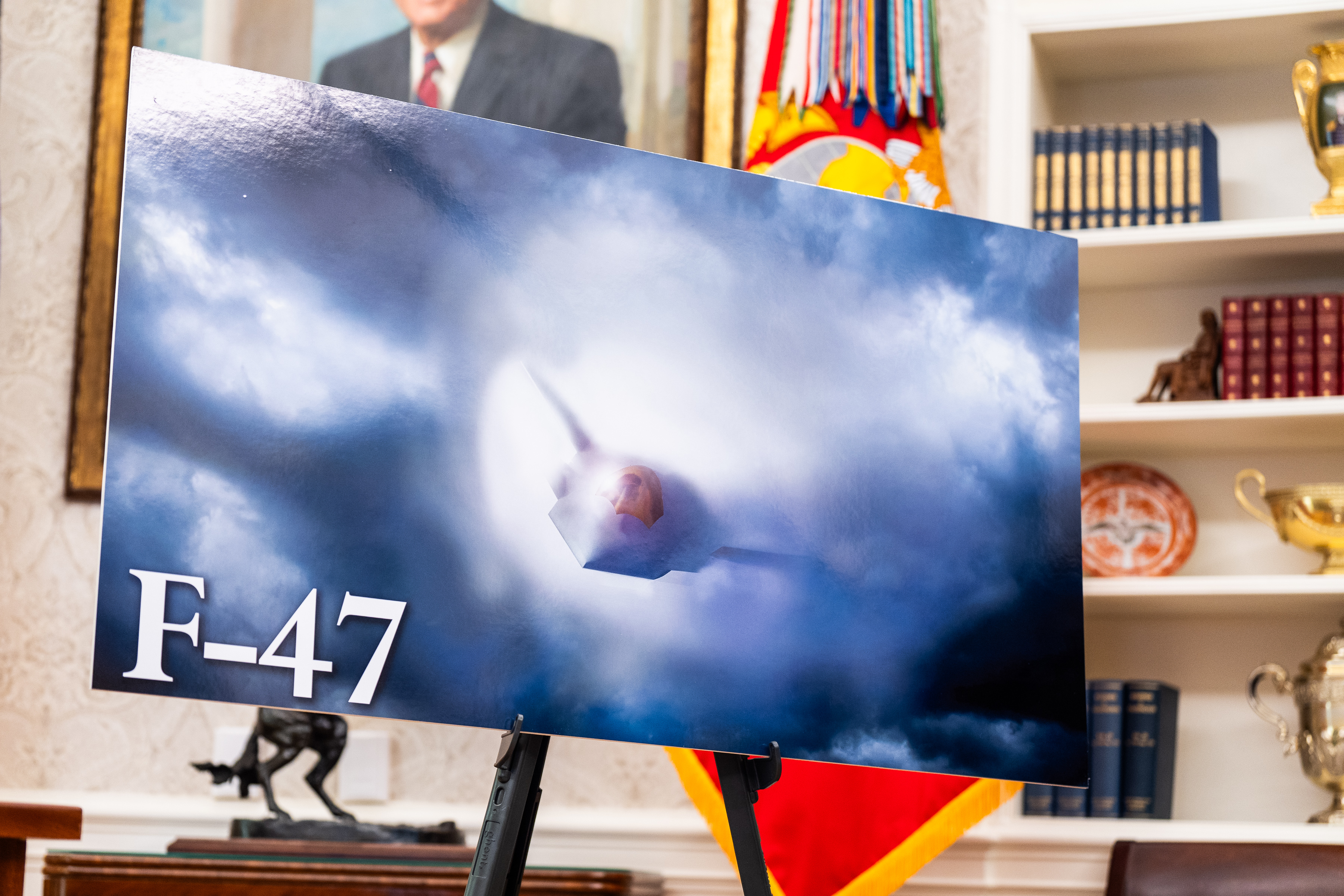 A rendering of the F-47 fighter jet in the Oval Office of the White House on March 21, 2025. Photo by Demetrius Freeman/The Washington Post via Getty Images The Washington Post
A rendering of the F-47 fighter jet in the Oval Office of the White House on March 21, 2025. Photo by Demetrius Freeman/The Washington Post via Getty Images The Washington PostOn the other hand, U.S. allies might be more willing to buy a somewhat downgraded NGAD crewed fighter if it were to be notably cheaper. Different future iterations of the NGAD combat jet could offer one way of achieving that.
For now, we don’t know what “Increment 2” and beyond might look like, or even if the Air Force will find space and funds for them.
However, it’s worth noting that this is not the first time that fielding multiple variations of the NGAD fighter has been proposed.
Back in 2021, TWZ reported on how the Air Force was apparently looking at fielding long- and shorter-range versions of the NGAD combat jet, optimized for operations in the Indo-Pacific and European theaters, respectively.
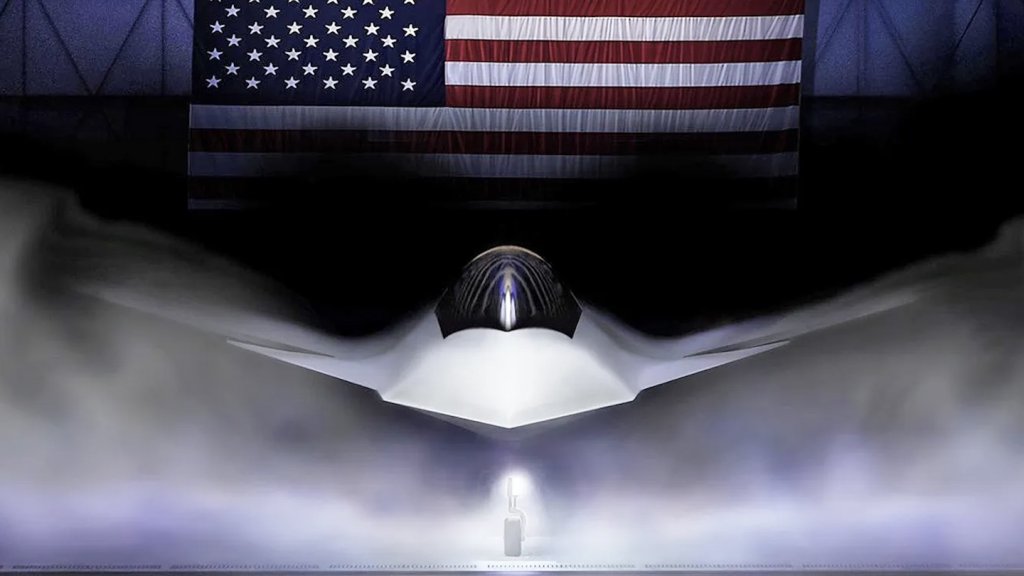 One of the first renderings of the Boeing F-47. U.S. Air Force U.S. Air Force
One of the first renderings of the Boeing F-47. U.S. Air Force U.S. Air ForceAt a House Armed Services Committee hearing regarding the Air Force’s Fiscal Year 2022 budget request, Gen. James M. Holmes, the former head of Air Combat Command, brought up the idea of two distinct versions of the NGAD fighter component, an ‘Indo-Pacific version’ optimized for long-range/heavy-payload missions and one with shorter range sufficient for the European theater of operations. At the very least, it would appear that a different wing planform would be required for each jet to meet these goals.
These different configurations could make the ‘European version’ a bit cheaper to buy, although savings might be offset by the need for different support infrastructure, with a knock-on effect on concepts of deployment and operation.
It was later said that this concept had been dropped from where the USAF was headed with the NGAD fighter program. But nevertheless, an iterative approach to the NGAD fighter jet could revive such a idea and make it a reality.
At the same time, there would still be some significant commonality between different NGAD fighter increments regardless of the base airframe configuration. Having the aircraft’s subsystems and software identical across different increments would help reduce risk, increase commonality, and drive down costs. Furthermore, the broader NGAD family of systems — radars, infrared search and track systems (IRST), electronic support measures, electronic warfare capabilities, engines, communications architecture, weapons and more — would be the same. The Navy NGAD program, too, features a lot of commonality with the Air Force equivalent, especially when it comes to the elements mentioned here.
 Another F-47 rendering. U.S. Air Force
Another F-47 rendering. U.S. Air Force In the past, TWZ considered whether the Air Force might choose a highly modular design to achieve different versions of the fighter, although Hunter’s more recent words would seem to suggest at least the possibility of more distinct iterations, which might not even be from the same manufacturer.
Even before this point, there was a broader discussion about a more rapid development of new fighter designs, something that now seems to be reflected in Hunter’s outline of NGAD combat jet iterations.
Most prominently, Hunter’s predecessor as Assistant Secretary of the Air Force for Acquisition, Technology & Logistics, Will Roper, championed the so-called ‘Digital Century Series.’ Under this approach, new fighters were to be developed at increments of up to one every five years. Limiting service life to reduce cost and increase iterative production was also a major potential component of such a vision. The idea was always highly ambitious, as we have discussed before, but it was also always expected to play a central part in the NGAD program. Hunter’s words could imply that, at least in some small part, this may now the case. It still seems highly unlikely that we will ever see all-new crewed fighter designs being churned out at such a prodigious rate.
 Dr. Will Roper, in 2019, when he served as Assistant Secretary of the Air Force for Acquisition, Technology & Logistics. U.S. Air Force photo by Staff Sgt. Chad Trujillo
Dr. Will Roper, in 2019, when he served as Assistant Secretary of the Air Force for Acquisition, Technology & Logistics. U.S. Air Force photo by Staff Sgt. Chad TrujilloStaff Sgt. Chad Trujillo
Overall, from what we know so far about the F-47, this component of the NGAD ‘family of systems’ does sound like it will be primarily a Raptor successor for the high-end fight, albeit one that is superior across its capabilities and which adds new functions such as drone-controller.
However, the words of the former Assistant Secretary of the Air Force for Acquisition, Technology & Logistics do at least point to thinking around additional versions of the NGAD combat jet. Perhaps the most likely scenario will involve successive production batches of the same basic F-47 design, but incorporating certain changes.
Whether such designs will actually be realized remains to be seen, but for now, this is another tantalizing potential aspect of a program that is slowly starting to emerge from the shadows.
Contact the author: [email protected]

 By The War Zone | Created at 2025-04-01 20:46:02 | Updated at 2025-04-03 00:38:54
1 day ago
By The War Zone | Created at 2025-04-01 20:46:02 | Updated at 2025-04-03 00:38:54
1 day ago



